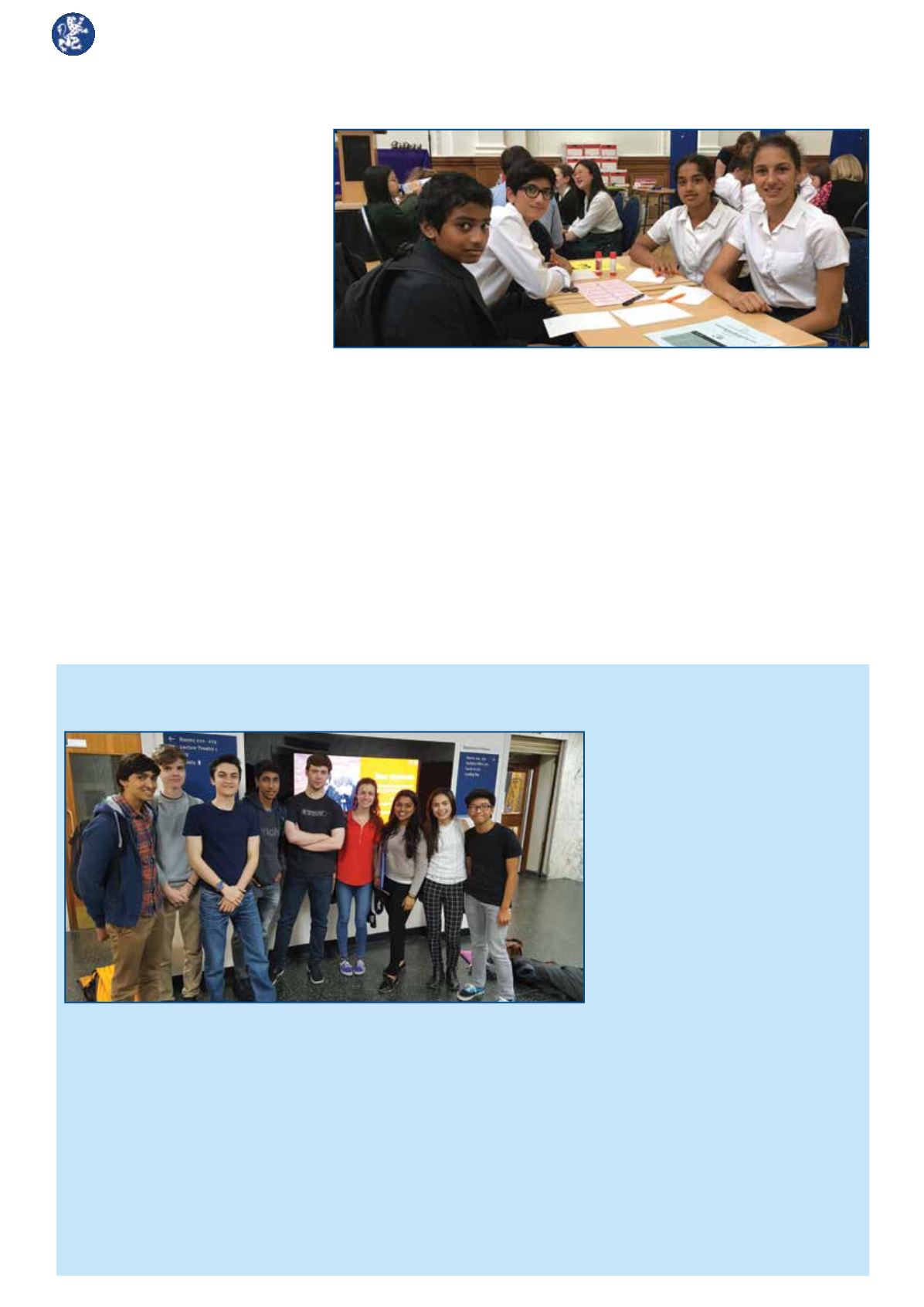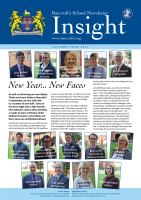

MATHS AND SCIENCES 3
UKMT Team Maths Challenge
Sara El-Khamlichi, U4E
Maths, contrary to widespread belief,
is a subject looked upon with mixed
emotions by some Bancroft’s pupils,
possibly feelings of dread or horror.
Some might even see it as a subject
consisting of random numbers and
pointless equations and of no real
value in the outside world, a popular
statement being “When am I going
to need Pythagoras in real life?”
However, at the UKMT TeamMaths
Challenge Final, held at the Royal
Horticultural Halls, I learnt that these
seemingly “pointless” equations can
be used to stretch and stimulate the
mind, so enhancing skills of logical
thinking and creativity.
With our team of Jathusan Vijayakumar,
Akhila Natarajan, Aarian Judge and me, we
kicked off the day with the poster round,
requiring us to design a poster related to an
obscure, lesser-known branch of maths called
“Polyominoes” which focuses on geometric
figures made by joining equal squares edge
to edge, an example of which are dominoes.
Fifty stressful minutes later we produced a
colourful, vibrant A1 poster featuring a large
games console on which a game of Tetris
was being played. Then it was time to put
the scissors and glue to one side and focus
on the upcoming three rounds, which we
anticipated to be nothing but challenging.
Half way through the first round, we realised
that challenging was an understatement with
unusual, yet interesting, problems pushing
our abilities to think fast under pressure as
well as creatively, logically and accurately.
However, by working as a team and using
the vast range of ability and strengths in our
quartet, we found that many of the problems
did not require any complex equations or
logarithms. All that was needed was a hint of
common sense and strategical thinking.
When I look back at my time at Bancroft’s,
I won’t remember the invigorating maths
lessons on BIDMAS or trigonometry or
even circle theorems. It will be events
such as this one, that I will look back on
and think simply how much fun I had
and, as clichéd as it might sound, how
much I learnt from them, in particular the
importance of appreciating everyone’s
strengths and weaknesses and how,
by using them together, even the most
difficult of problems can be solved. Thank
you to Mr Tse for taking the time to
organise our team, by arranging our
weekly practice sessions and preparing
us for the finals. It was, as he stated on
more than one occasion, a once in a
lifetime opportunity.
High Energy Physics Course
Thomas Rendora, U6N
A small group of Physics students
in the Lower Sixth went to a High
Energy Physics course at Imperial
College London. We had talks
by speakers such as Prof Ulrik
Egede, Dr Seth Zenz, Dr Philip
Litchfield and Dr Francis Froborg
on fascinating topics ranging from
dark matter to neutrinos.
Prof UIrik Egede spoke about measuring the
lifetime of a D meson, a fairly complicated
subject that required an introduction into the
nature of quarks, the smallest constituents
of matter that we know of. Following that,
we mapped the movement of particles from
collisions in the Large Hadron Collider (LHC)
on a computer, tracking them back to their
common point and combining our data to
approximate the lifetime.
Dr Seth Zenz covered how the LHC works
and the various detectors in it such as CMS,
ATLAS, and ALICE. He also explained concepts
such as the
Higgs Mechanism
, which
interacts with particles so they behave “as if
they have mass”. We discovered that the LHC
is over 100m below ground, as well as having
a 27km circumference.
Dr Philip Litchfield talked about the most
exciting topic: neutrinos, a fundamental
particle which is one of the most common
in the universe. They are electrically neutral
and only affected by gravity and the weak
force, making them extremely difficult
to detect, as both forces have very little
influence at an atomic level. Additionally,
they have their own
flavour
, which
corresponds to their mass, however this can
change while travelling! As a result, one can
use neutrinos to measure time.
During the lunch break we questioned
researchers about any concepts we had
difficulty understanding. Their passion really
came across in their answers, and they were
eager to explain all that we wanted to ask.
After the break, Dr Francis Froborg
discussed dark matter and cosmology, a
subject I find particularly interesting. We
learnt how very little is known about it,
however there is a large amount of evidence
that points towards its existence, making
it one of the greatest mysteries of the
universe. She showed us an animation on
the formation of the universe, which made
us chatter enthusiastically to each other.
By the end of the day, we were very tired
and our brains were almost bursting with so
many new ideas. I think it’s safe to say that
we found the trip incredibly stimulating and
enjoyable, and would gladly go again.

















